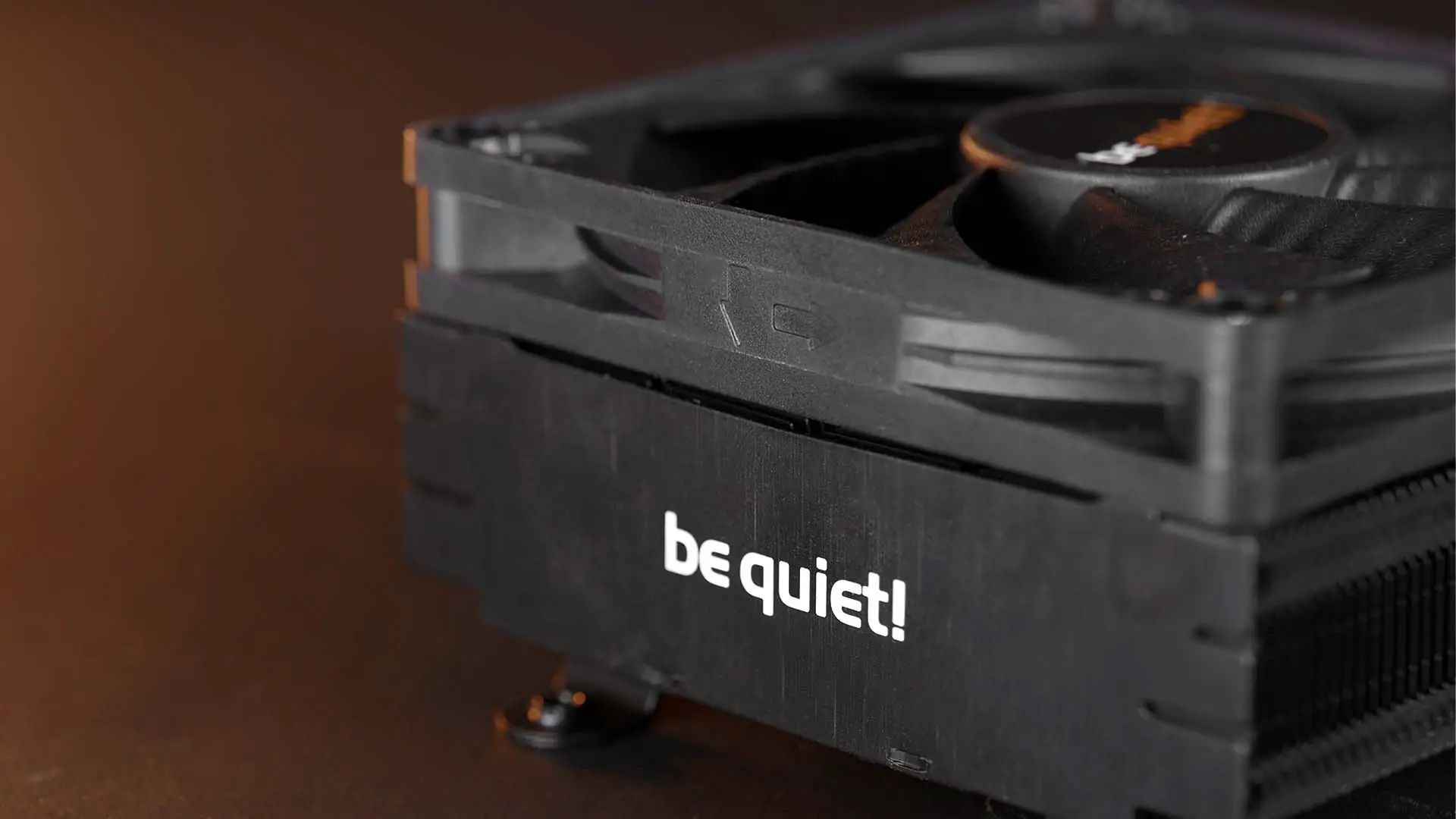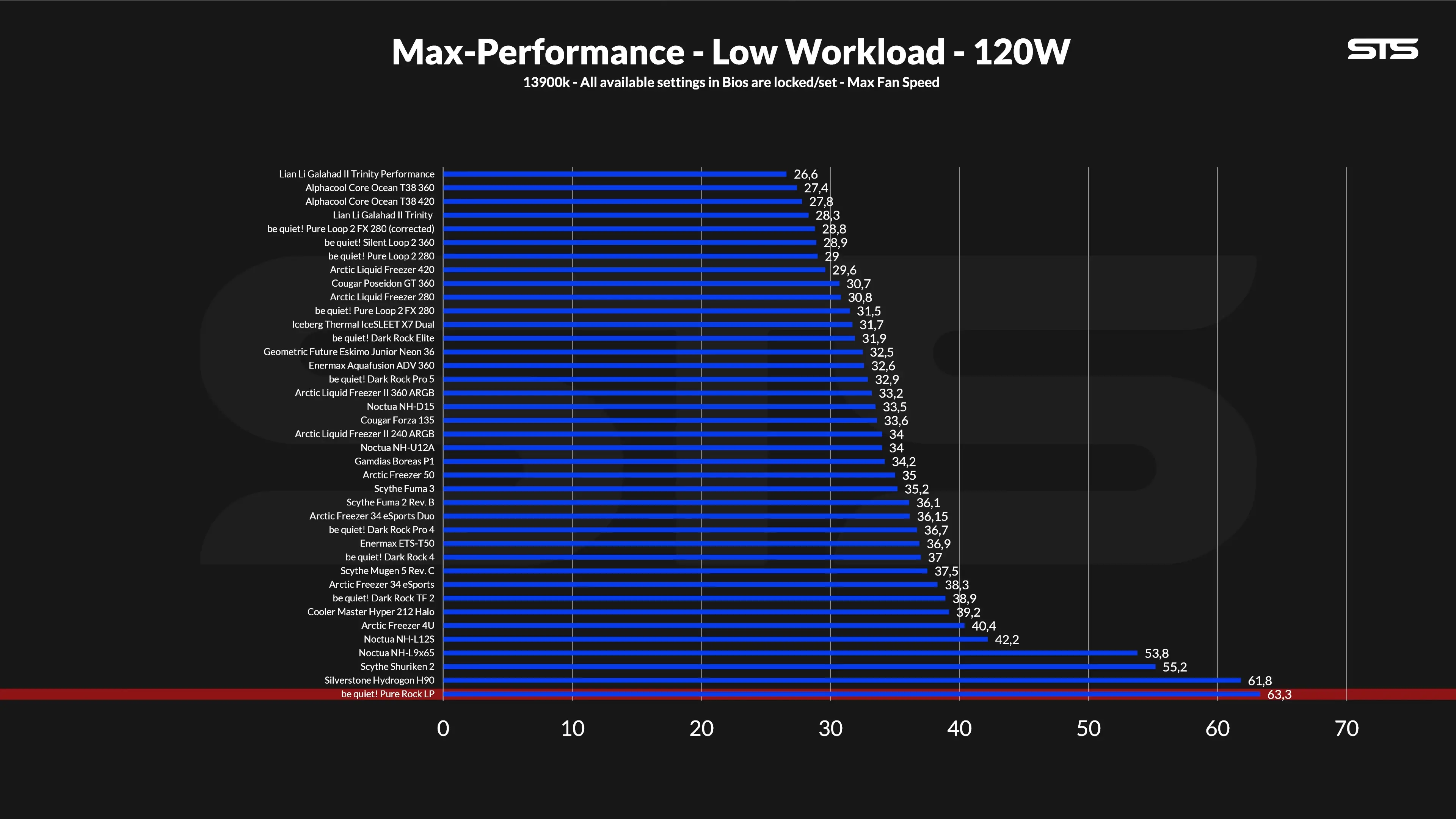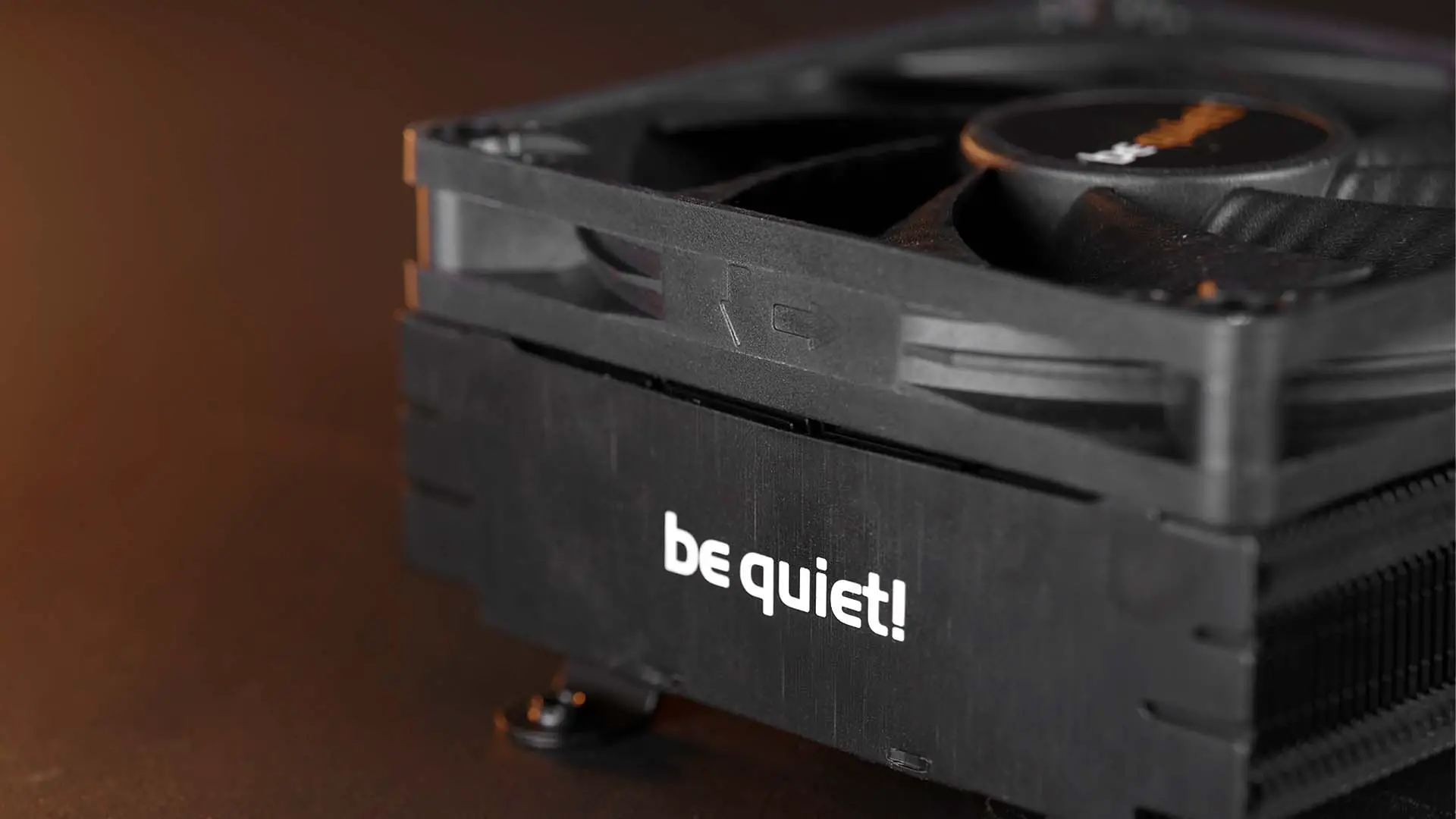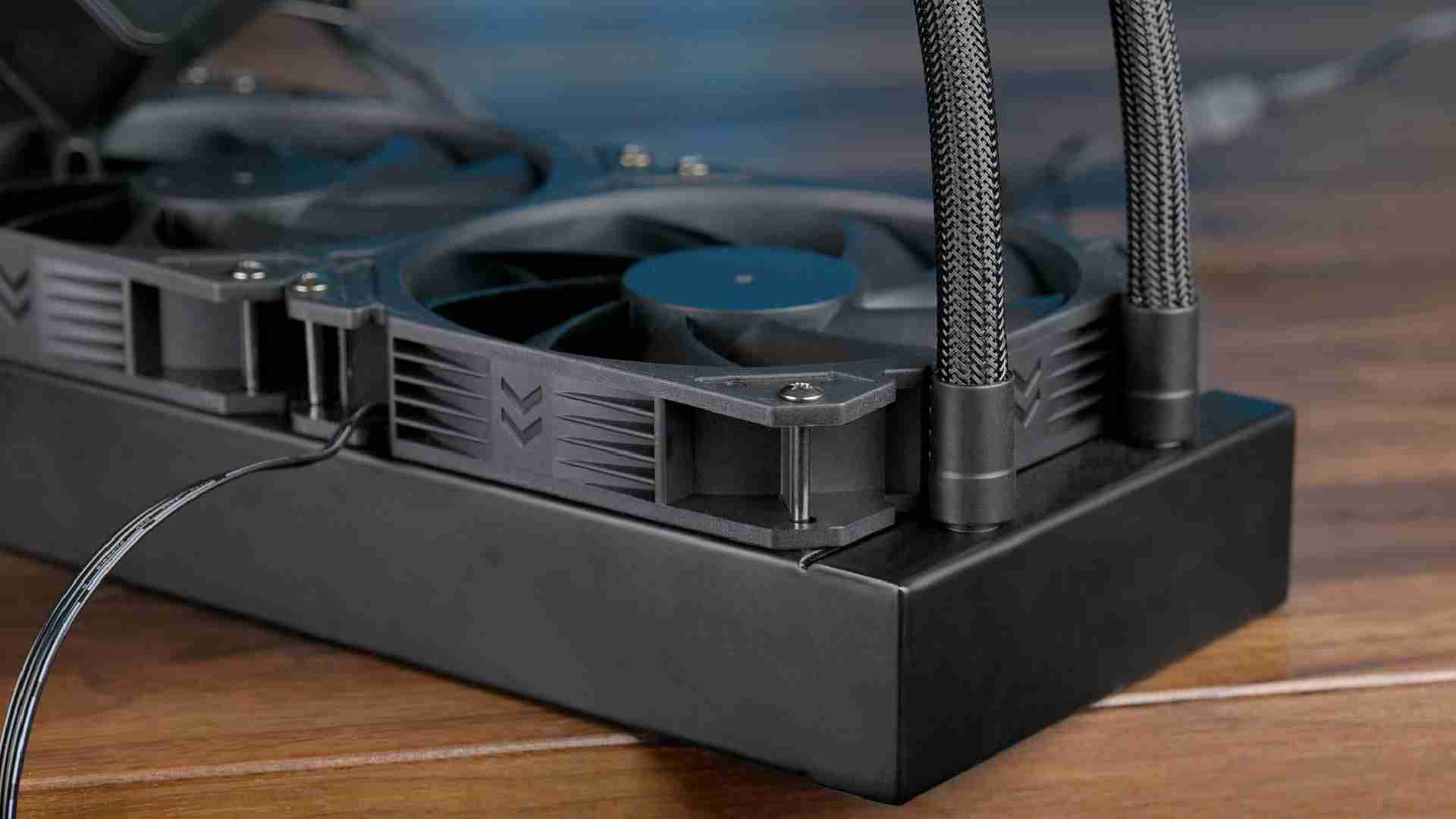be quiet! Pure Rock LP
INTRODUCTION
The ultra-small SFF CPU cooler market is really hard. Not only do you have very limited space to work with, but condensing all of that cooling equipment makes the price jump high extremely quickly. With their Pure Rock LP, be quiet! is trying their luck to deliver the best low-profile cooler yet!
POSITIVE
- Excellent Noise-to-Performance Ratio
- Acceptable Max-Performance
- Very affordable
NEUTRAL
NEGATIVE
- Installed right on the socket
WHAT'S IN THE BOX?

be quiet!'s smallest air cooler yet comes in a miniature version of their usual box design. Containing some imagery and a short overview of its specs, you will find the following items inside of the box:
- be quiet! Pure Rock LP Cooler
- Installation Hardware AMD & Intel
Down below you will also find a short summary of the specs of the cooler:
| Name | be quiet! Pure Rock LP |
| Dimension | 92x92x45mm (DxWxH) |
| Fan |
In-house made 92mm Fan |
| Fan Airflow |
- unknown - |
| Fan Connection | PWM |
| Fan Speed |
< 2500 RPM |
| Fan Noise |
< 30.6dbA |
| Fan Air Pressure |
- unknown - |
| Color |
Black |
| RGB |
- none - |
| RGB Connection |
- none - |
| Ram Restriction | - none - |
| Extra | - none - |
COMPATIBILITY
Although the installation can be quite tedious, the Pure Rock LP keeps a quite big compatibility list. Down below you will find the full compatibility list:
| Intel | AMD |
| LGA1700 | AM5 |
| LGA1200 | AM4 |
| LGA115x |
INDIVIDUAL COMPONENTS
FAN

Pre-mounted on the cooler, we'll find a be quiet! in-house made 92mm sized, 15mm thick fan. Other than 2500RPM maximum speed, and the surprisingly long 260mm PWM cable, there is little information available on the fan itself.
All we can say is that it strongly resembles a downclased version of be quiet!'s older Silent Wings 3- lineup.
HEATSINK

Underneath the fan, we will find the tiny heatsink-like-looking piece of aluminum that is supposed to get the heat away from the chip.
Being only 30mm high at most, the heatsink of the Pure Rock LP is one of the smallest available on the market.

Obviously, as it barely spans wider than the actual mounting hole of sockets nowadays, there is no restriction capable of being created by the heating or the cooler.
BASE

At the bottom of the cooler, we will find a solid piece of copper, a base build-style we haven't seen in a long time. Another surprise was that there are actually heat pipes connected to the full copper base. Going up from there, we got 3x heat pipes that are traveling all across the tiny heatsink.
APPEARANCE

In an all be quiet! fashion, the Pure Rock LP comes in an all-black design featuring an all-black heatsink and a black fan.
The only optical features available on the cooler are the white be quiet! logos on the heatsink and the older orange logo on top of the fan.

Whether you like the all-black design or not will be up to you, for us, however, we always have and will strongly enjoy the all-black design that be quiet! follows with all of their coolers.
BENCHMARK
We benchmarked the cooler using our new CPU Cooler Benchmark Machine featuring 3 different Workloads at 320, 250, and 120W.
Naturally, due to the Pure Rock LP's extremely small form factor, only the 120W workload applies. This generally applies to all SFF-type coolers.
120W
On the "light" workload at 120W, Pure Rock LP kept the CPU at 63.3°C above ambient.

Even if this positions the cooler at the very bottom of the list, it is also the smallest cooler that we have benchmarked yet. Even the slightly better-performing Hydrogon H90 comes in at 3mm more, which is a lot for biscuit-sized coolers.

By slowly lowering the fan speed we created a noise-to-performance line. On this one, we were able to see that although the Hydrogon was slightly better at max performance, the Pure Rock LP dominated the noise-to-performance ratio.
Actually, it was so surprisingly quiet that it even came close to the much bigger Scythe Shuriken 2.
CONCLUSION

On one hand, we were quite unfair to be quiet!'s Pure Rock LP. As clearly stated on the box and spec sheet, the cooler is rated to be used on chips that are outputting up to 100W, which is 20W less than we are benchmarking using the low-workload test.
On the other hand, the Pure Rock LP managed to perform the test.

Even if at max performance, the Pure Rock LP did not manage to outperform the Hydrogon H90, it is still slightly smaller, and more importantly, it dominated in the noise-to-performance category. A quite impressive result considering its size.

Generally, our finding and summary of the Pure Rock LP is very positive. It managed to score some major points in quality, compatibility, and especially noise to performance. However, as with every cooler in this form factor, beware of what CPUs you are pairing it with. Even if we proved that the low-profile cooler can control a 120W workload indefinitely, we wouldn't advise you to do so on a permanent basis. Therefore we would recommend the cooler to be used with lower TDP chips such as the 13600 non-K, or 7600 non-X or lower.


Noctua NH-L9x65 Review
Noctuas NH-L9x65 is probably the beefiest Ultra-Low-Profile CPU cooler you will find which will handle the job. Doubling down
Read More
Alphacool Core Ocean T38 360 Review
With Alphacools new Core series of products, they are aiming to bring incredibly affordable cooling equipment while maintaini
Read More
Gelid Glacier RGB Review
What happens if we take two of Gelids Stella Fans, and slap them onto a dual tower heatsink? Exactly, one hell of a thick coo
Read More
Xilence LiQuRizer 360 ARGB Review
After Xilence managed to set a new record for price-to-performance within the AIO market, they now are looking to take over t
Read More